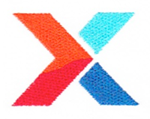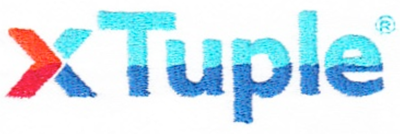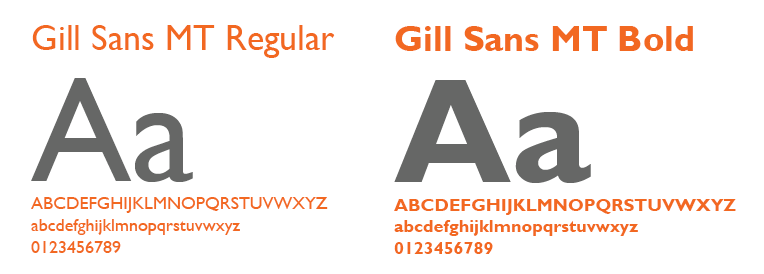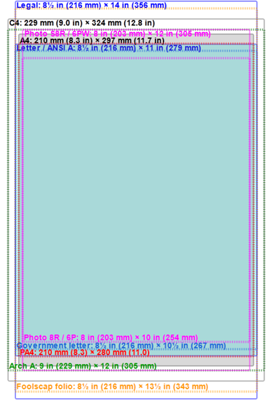The authority for all xTuple communication and marketing — xSG
- Representation online, including xTuple websites and product review sites
- Reinforce the overall goals and objectives of the company
- Communicate a progressive, high-quality organization
- Maintain a professional and uniform corporate image
- Achieve consistency in all publications and correspondence
Please help us maintain and build a strong brand identity by reporting any questionable usage of xTuple logo and/or breach of xSG standards. To save any graphic to your local computer, just right-click over the image and choose "Save Picture/Image As..."
Media Inquiry
Style Guide
- Logo
- Logo Misuse
- Logo Variations
- "x" and Approved Vendors
- Typography
- Color
- Miscellaneous
- Social Media Policy
- Formatting
- International
- Email Signatures
Please share your brand usage and questions with xTuple Marketing staff for review and approval. We will work with you to ensure that logo use and guidelines are met and the integrity of the xTuple brand identity is protected.
Logo
The xTuple multi-color logo is the face of our brand. Our logo is the key element of our brand identity and consistent use of the logo is essential to maintaining our identity and gaining instant recognition across all marketing channels and media.

The registered trademark symbol (®) must accompany the xTuple logo at all times. The xTuple company name used in plain text does not need to be accompanied by the symbol.
Logo Misuse
All product names that begin with a lower case letter are kept lower case at all times, even when beginning a sentence, or the entire word is capitalized.

Misuse of the xTuple logo includes using it without the registered trademark symbol and using the registered trademark symbol without using the proper shaping of the “x” in the logo.


Logo Variations
Color Variations
The xTuple logo should be used in full color wherever possible. The examples on this page demonstrate acceptable color usage in extreme cases where logo cannot be used in full color. The color usages shown are the only approved options.



Background Control
The xTuple logo must be used in full color whenever possible. If placed on a patterned or textured background or background of any activity, the xTuple logo must be dominant over the background. Reducing background opacity should be done whenever possible. In extreme cases where logo cannot be used in full color and the background opacity cannot be reduced, one color variations as shown are allowed.



"x" and Approved Vendors
The use of the multi-colored “x” as shown in the xTuple logo is reserved for xTuple corporate use only — for example, in social media, xTuple promotional products and in marketing materials (which may be co-branded with xTuple Partners). For quality purposes, xTuple reserves the right to approve any vendors using the xTuple logo.

Approved vendor example is the xTuple Company Store courtesy of Lands’ End (http://ces.landsend.com/xTuple) for which xTuple has paid the logo set-up fee. Therefore, in addition to the cost of merchandise selected, you only pay the embroidery fee. The following “X” and “xTuple” logos are available:

"x" Logo Number: 1266343W
"x" Logo Size: 2.00 x 1.44

"xTuple" Logo Number: 1239294W
"xTuple" Logo Size: 3.60 x 1.01
Typography
Gill Sans, available in various weights and styles, is the official font used to represent xTuple. The consistent use of the selected typeface family for xTuple Logos adds to the company’s cohesive visual identity. The Open Sans Family should be used in the making of xTuple print material and Web-based material wherever and whenever it can be applied.


Color
Color is key in keeping the company style identity consistent. The Blue and Orange serve as anchor points. The primary and secondary color palette is inspired by the xTuple multi-color logo. The gradient in the signature allows for many shades of the colors listed. While the primary color palette is the basis for print and web usage, other shades of the primary color palette have been used based on specific needs. Other color variations based on the primary color palette are to be created by and/or approved by xTuple Marketing.
| Primary Colors | |||
| 0C/74M/100Y/0K | 255R/102G/0B | #ff6600 | orange1 |
| 100C/100M/16Y/12K | 36R/19G/123B | #24137b | blue1 |
| 78C/55M/0Y/0K | 1R/119G/255B | #0177ff | blue2 |
| 60C/51M/51Y/20K | 102R/102G/102B | #666666 | grey1 |
| 69C/63M/62Y/58K | 51R/51G/51B | #333333 | grey2 |
| 35C/28M/28Y/0K | 170R/170G/170B | #aaaaaa | grey3 |
| 8C/6M/6Y/0K | 232R/232G/232B | #e8e8e8 | grey4 |
| Request Demo Button - Gradient | |||
| 73C/12M/100Y/1K | 79R/162G/6B | #4fa206 | dk green |
| 61C/1M/100Y/0K | 112R/188G/44B | #70bc2c | lt green |
QR Codes
Click on the App Store icon on your mobile device or follow the appropriate link below to access the app store for your device online. Once you arrive at the App Store, search for "Free QR Code Reader" and download the application. It's that easy!

- Android App Market (Google Play store)
- Apple iOS App Store
- Blackberry App World
- Windows App Marketplace
Operating Systems
When marketing the various systems with our software is compatible, use the images below. Graphics for each operating system or platform should be updated as needed.

Social Media Policy
Icons for Social Media must stay true to current social media icons used by the Social Media provider as well as abiding by any brand identity guidelines put into place. See website footer for our main corporate Social Media accounts, which are regularly maintained, and their appropriate logos.
- Facebook https://www.facebook.com/xTuple
- Flickr https://www.flickr.com/photos/xtuple/sets/
- Google+ https://plus.google.com/112883181973598848597/posts
- Instagram https://www.instagram.com/xtupleb2b/
- LinkedIn http://www.linkedin.com/company/xtuple
- Pinterest http://pinterest.com/xTuple
- Twitter
- xTuple ERP http://twitter.com/xTuple
- xTupleCommerce https://twitter.com/xTupleB2B
- xTuple Sales https://twitter.com/xTupleSales
- xTuple University https://twitter.com/xTupleU
- Vimeo https://vimeo.com/xtuple
- Wikipedia
- xTuple ERP http://en.wikipedia.org/wiki/XTuple
- PostBooks® https://en.wikipedia.org/wiki/Postbooks
- YouTube http://www.youtube.com/user/xTupleERP
There is no longer any such thing as “internal” communications
Social Media guidelines apply to xTuple employees, Partners or independent contractors who create or contribute to blogs, wikis, social networks, virtual worlds or any other kind of Social Media. Whether you log into LinkedIn, Twitter, Yelp, Wikipedia, MySpace, Google+ or Facebook, or comment on online media stories — these guidelines are for you.
All xTuple employees are welcome and encouraged to participate in Social Media. Please understand these important and easy-to-follow guidelines. Our overall goal is simple: to participate online in a respectful, relevant way that protects our reputation and grows the xTuple brand.
- Be transparent. Honesty is of the utmost important. If you are writing about xTuple or a competitor, use your real name, identify that you work for xTuple and be clear about your role and that you are not a company spokesperson. If you have a vested interest in what you are discussing, be the first to say so.
- Be truthful. All statements about xTuple and its competitors must be true and not misleading; all claims must be substantiated. If you want to write about the competition, make sure you behave diplomatically, have the facts straight and that you have the appropriate permissions.
- Be respectful. Post meaningful, appropriate comments; please, no spam and no remarks that are off-topic or offensive. Use common sense and common courtesy. Do not share anything online you would not want to appear on the front page of the newspaper. Respect other people’s stuff. Just because something’s online doesn’t mean it’s OK to copy it. Ask permission and always give people proper credit for their work.
- Be authentic. Stick to your area of expertise and do feel free to provide unique, individual perspectives on non-confidential activities at xTuple.
- Be appropriate. When disagreeing with others’ opinions, keep it polite. If you find yourself in a situation online that looks as if it’s becoming antagonistic, do not get overly defensive but also do not disengage abruptly. Ask Marketing for advice on how to disengage from the dialogue in a polite manner that reflects well on xTuple.
- Be calm. Never participate in Social Media when the topic being discussed may be considered a crisis situation. Even anonymous comments may be traced back to your or xTuple’s IP address. Refer all Social Media activity around crisis topics to Marketing.
- Be smart. Protect yourself, your privacy and xTuple’s confidential information. What you publish is widely accessible and will be around for a long time, so consider the content carefully. The World Wide Web has a very long memory. There’s really no such thing as “delete” on the Internet, so please — think before you post.
- Be global. It’s a small world, and we’re a global company. Remember that what you say can and may be seen by others all over the world and something you say in one country might be inaccurate or offensive in another.
- Be judicious. Your job comes first. Unless you are an authorized Social Media Contributor, don’t let social media affect your job performance.
- Be careful. If you #!%#@# up? Correct it immediately and be clear about what you’ve done to fix it. Contact xTuple Marketing Team if it’s a real doozy.
- Be valuable. Make sure your posts add to the conversation. If it promotes xTuple’s goals and values, supports our customers, improves or helps us sell products, or helps us do our jobs better, then you are adding value.
- Be engaging. Engage customers in conversations where they are happening. You’re representing us, and we are trusting you. Act accordingly. Word of mouth is extremely important to us. If you can make the experience better than expected, do it.
Don’t even think about it
- Sharing financial information, sales trends, strategies, forecasts, legal issues, future promotional activities
- Giving out personal information about customers or employees
- Posting confidential or non-public information
- Responding to an offensive or negative post by a customer (there’s no winner!)
xTuple's Collective Brainpower Blog
The Collective Brainpower Blog is xTuple's published feed of informal online articles to inform, educate and connect our global open source ERP community. It contains business-to-business (B2B) topics on operations, technology, the Web and eCommerce and includes news coverage, media releases and our e-newsletter, the xTupler.
Everyone has written blog posts that are now out-of-date, especially if you've been around as long as this blog has — since 2002. Numbers change, best practices improve. But historical content, experiences and processes deserve an archive. What do you do?
The xTuple blog is a body of content that establishes our websites and our subject matter experts as the authority on topics related to our industry — open source ERP and CRM for manufacturers and distributors. Blog posts have a life of their own — they are at the core of social media activity and our email newsletter. They’ve been linked to by other sites and shared by users and customers. Removing a blog post can harm search engine optimization (SEO) performance by breaking those links, resulting in “Page Not Found” errors that tell Google our site is broken.
xTuple's blog policy
- OLD POSTS: We do NOT delete old posts that are now out-of-date. If there are a few things off, we will make (and note) edits, updates and corrections, but will not delete the old data. We will add a note at the top of the updated post to indicate edits have been made. Use this helpful checklist for editing old blog posts.
- REPLACEMENT POSTS: If appropriate, we'll write a brand new post on the same topic with current information. We WILL ONLY REMOVE an old post if the information is wrong and could be misleading now. Please contact xTuple Marketing if you find a blog post that should be removed, in your opinion.
- REMOVED POSTS: If we do need to take down a post, rather than allow site users to get a frustrating 404 Page Not Found error (and to avoid Google's wrath and affect our search engine ranking), we will provide 301 redirects to automatically send users to another more relevant page on our website. Redirects inform search engines that content has moved to a new location.
Your contact information is private with us
If you registered as a website or software user, we are happy to have you as a member of our community. Your email address and interest preferences have been recorded in our database. In the future, you will receive periodic emails specific to your interests. Privacy is important to us; therefore, we will not sell, rent, or give your name or address to anyone. xTuple's Privacy Policy
Formatting
AP style governs “fast” content (newspapers, online articles). Chicago style governs “slow” content (books, some periodicals); this clarifies how the reality of media dictates style.
- Serial Comma. The serial comma (also known as the Oxford comma or Harvard comma) is the comma used immediately before a coordinating conjunction (and, or, nor) preceding the final item in a list of three or more items. For example, a list of three countries could be punctuated as either “Portugal, Spain, and France” (with the serial comma) or as “Portugal, Spain and France” (without the serial comma). In American and British English, the serial comma is standard usage in non-journalistic writing that follows the Chicago Manual of Style. Journalists, however, follow the AP Stylebook, which advises against it. In many languages (e.g., Danish, Dutch, French, German, Greek, Italian, Norwegian, Polish, Romanian, Spanish) the serial comma is not the norm and goes against punctuation rules.
- Semi Colon. The semi colon is recommended to aid the intended tone or rhythm of the writing (e.g., “He hit the ball, dropped the bat, and ran to first base. The semi colon is recommended in place of the serial comma to avoid ambiguity in the case of complex or lengthy phrases (e.g., There were citizens from Bangor, Maine; Hartford, Connecticut; Boston, Massachusetts; and Newport, Rhode Island.)
- Spacing. Only one space after each period or any sentence-ending punctuation. Two spaces after a colon. Every modern typographer agrees on the one-space rule. Every major style guide — including the Modern Language Association Style Manual and the Chicago Manual of Style — prescribes a single space after a period.
- Capitalization and Hyphenation. Examples: Web-based, Web, Internet, website, email, eCommerce
- Dashes. Used for emphasis, the long dash or em dash ( — ) has spaces inserted before and after to separate it from text. Same holds true for the ellipsis ( ... ).
- Proper usage of common terms.
- log in (v.); login (n. and adj.)
- on site (adv.) qualifies an adjective, verb or another adverb in terms of place or time; on-site (adj.) at or near the location of an activity
- set up (v.); setup (n. and adj.)
Product Names
xTuple has capitalization and spellings specific to our company name and products. Please follow naming conventions as provided throughout our website. Examples —
- xTuple (even at the beginning of a new sentence or bullet, the company name is always expressed as "xTuple")
Hyperlinks
If relative to the site, omit the target attribute in the link; but if linking to an external site, always open the link in a new window or tab. A quick way to do this is by adding the target=”_blank” attribute.
- Example of a RELATIVE link <a href=”internal/page”>Internal page</a>
- Example of EXTERNAL link <a href=”http://google.com” target=”_blank”>External page</a>
Bullets
Capitalize the first word in bullets; punctuation at the end of each phrase is optional and generally not used. Short phrases and sentences should end with appropriate punctuation.
International
Paper Size Standards
Today there is one widespread International Organization for Standardization (ISO) standard and a local standard used in North America (including letter, legal, ledger, etc.). Paper sizes affect writing paper, stationery, cards and some printed documents, as well as related sizes for envelopes.
The most frequently used paper size globally is A4, which is 210 by 297 millimeters or 8.3 by 11.7 inches. The international paper size standard, ISO 216, is based on the German DIN 476 standard for paper sizes and has been adopted as well as the official United Nations document format. Today the A4 standard letter format has been adopted by all countries in the world except the United States and Canada. In Mexico, Costa Rica, Colombia, Venezuela, Chile and the Philippines the US letter format (8.5 by 11 inches or 215.9 by 279.4 millimeters)is still in common use, despite their official adoption of the ISO standard.
As an American-based company, xTuple’s print collateral is developed in US letter format and may be adapted to A4 for our global Partners.
Click on image for a larger comparison view of international paper sizes.
For more detail, visit http://en.wikipedia.org/wiki/Paper_size.
Email Signatures
To use the logo, save the image to your local computer. Right-click over the image and choose "Save Picture/Image As..." Then drag or upload the image to your preferred email provider. Do NOT copy/paste images from the xTuple website; save them as a file on YOUR computer.
Your Name
Your Job Title @xTuple (or Your Company Name, if you are an xTuple Partner)
Your Email Address
Your phone number (if desired)
Schedule time with me (if desired and you have a calendar/scheduling app)

